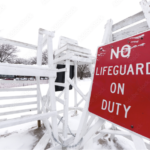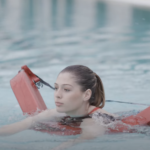Nobody wants to see anyone drown in front of them, but many people are unsure how to respond when someone begins struggling for his or her life in the water. Despite advances in technology, estimated annual drowning-related fatalities have remained constant here in the United States at approximately 10 per 100,000 people (approximately 3,300) over this period (National Center for Injury Prevention and Control). Also, for every person who drowns, there are ten more who nearly drown and suffer brain damage from loss of oxygen.”
That’s why it’s essential that everyone should take training in lifeguarding. Communities often provide courses through the American Red Cross, American Lifeguard Association, and YMCA. If you want information on becoming certified.
There are three basic types of lifesaving care or lifeguarding. These include prevention, assistance, and emergency care.
Assistance encompasses the skills needed to prevent drowning from occurring as well as those used to rescue someone from struggling in the water. Assisting can be broken down into performing a reaching assist, actual swimming assist, or CPR, along with using a backboard to immobilize someone with an injury. Prevention includes enforcing safety rules and making sure parents keep a watchful eye on their children. Also, make sure there are no dangerous conditions in or around the pool.
The most crucial lifesaving skill is knowing CPR. Cardiopulmonary resuscitation is not to be taken lightly by lifeguard training. A simple mistake can mean the difference between life and death for someone who hasn’t received proper care. Drowning victims often have less than a 10 percent chance of survival without immediate CPR performed by someone familiar with correct CPR techniques.
This may seem intimidating for many people, but it’s important to remember that CPR training drastically reduces these chances for fatality even if you receive it at extremely advanced ages. If you aren’t used to performing CPR, it’s essential to practice on mannequins every three months to feel comfortable enough to be prepared when an emergency arises.
A type of assistance is using a backboard to immobilize someone with an injury. This could include anything from striking someone’s head while diving into the pool (diving accident). Lifeguards must always care on the side of caution when attempting to help someone who appears injured because he or she may have multiple injuries that are undetectable without proper medical attention. Always have someone call 911 immediately before beginning any form of lifesaving care.
A type of prevention includes ensuring no dangerous conditions around the pool and keeping anyone outside of the water away from ongoing swim practices. Many drowning-related fatalities could be prevented if the entire pool were surrounded by fences that prevent unattended kids from wandering in, as well as those too young to swim themselves.
It is also essential to keep people away from swimmers who may have been ill recently or have been known to carry contagious diseases that affect other swimmers’ health. This is particularly true for chlorine-resistant bacteria, such as staphylococcus aureus (MRSA). In order to prevent outbreaks at your pool you should provide a clean changing area and ensure a certified swimming pool operator appropriately supervises the swimming pool.
Lifeguards are an integral part of the prevention process because they have the ability to spot potential dangers before serious injuries occur. Whether it’s someone jumping off the diving board without checking to make sure there isn’t another person (an extremely common scenario), or kids sneaking into the pool area through a gate that shouldn’t be open, trained eyes can pick up on all sorts of things that could cause harm.
A staff orientation session about facility operations and responsibilities helps lifeguards understand the facility, their responsibilities, and management’s expectations. The orientation is critical for learning what is unique about your workplace. Ask your employer questions about your facility and become thoroughly familiar with your facility’s operations. In addition, the employer needs to ensure that each Lifeguard candidate has all the skills and knowledge necessary for the position they are being considered. The employer also needs to ensure the candidate meets the physical and other elements before starting employment. The employer to evaluate your current skill level. Your employer may have you participate in rescue scenarios to ensure that you understand your team’s responsibilities and are familiar with your facility’s layout and equipment.
Lastly, to help save lives in and around the water, whenever possible, always swim in a guarded area, for when swimming in a protected area, you have only a one in 18 million chance of drowning.







